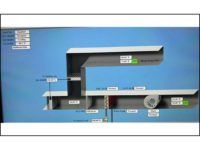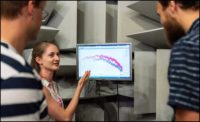After reviewing documentation that’s made available, preferably electronically, by the building owner (as addressed in my February 2021 column), the next step in a virtual retro-commissioning process is to learn what the building operators know.
We all understand that existing buildings rarely operate exactly as originally intended. In addition, original design, construction, and operations and maintenance (O&M) documentation cannot be relied on for full accuracy or completeness. Therefore, the commissioning professional needs to go to the people who know the system best to fine-tune, add to, and enhance his/her understanding of the building systems. This will typically be the full-time operations staff, if there is one, or out-sourced service contractors.
Although calls and meetings with the building operators should be ongoing throughout a virtual retro-commissioning project, the initial interview will set the tone and should focus on the following three areas.
Documentation Confirmation — The commissioning professional will start by sharing what was learned from the documentation and confirm the information is correct. On a system-by-system basis, this might include the number of boilers, the fact that there are VFDs on certain equipment and no VFDs on other equipment, outside air intake locations, etc.
For each of the systems and components, try to learn what might have changed over time. For example, you might learn they replaced a rooftop unit (and why), added VFDs to equipment in a previous energy project, decommissioned one cell of a cooling tower, added supplemental heating to a geothermal loop, etc.
In addition, ask about pieces of equipment in the asset database the commissioning professional did not find in the original or renovation documents. It’s especially important to learn what was added and why in order to understand current operating configurations.
Building Automation System — Using the control system operations and maintenance (O&M) manual and BAS graphic screenshots as the basis for questions, the commissioning professional will want to ask about/confirm time-of-day operating schedules, set points, minimum outside air damper positions, etc. Overridden points in the graphics can be great conversation starters, as they can imply a problem the operators felt they needed to manually correct because the BAS programming wasn’t meeting their needs or sensors were out of calibration. These conditions usually call for retro-commissioning root cause analysis and corrective action.
Questions about regular BAS preventive maintenance and/or annual service contracts with a controls contractor are also helpful for understanding how engaged the building operators are with the BAS. Do they actively make sure it’s a useful and meaningful platform for operating the building systems, or is it something that was installed once and expected to function unattended? How often do they reference the BAS graphics, trend logs, etc.?
Trouble Issues — Although problems and issues will come up during the aforementioned discussions, the commissioning professional will want to specifically ask, “What are your biggest headaches?” To get the conversation flowing, ask questions based on potential issues noted in the documentation, i.e., areas in which the commissioning professional believes there could be operational issues if the equipment is installed and programmed as documented.
Finally, keep in mind this interview and ongoing interactions with the building operators will only be meaningful if the commissioning professional approaches the O&M staff with respect. Although extremely important for in-person retro-commissioning as well, the buy-in and trust of the building operators is absolutely critical for virtual retro-commissioning to work. Refer to my July 2015 column, “Leveraging O&M Staff Experience for Retro-commissioning,” for more on this topic.





